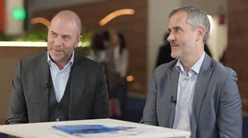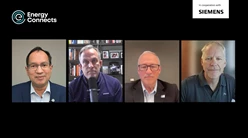More energy, fewer emissions: TotalEnergies bets big on gas and power
The world’s growing demand cannot be met by one form of energy alone, said TotalEnergies’ Chairman and CEO, Patrick Pouyanné, during a panel discussion on the opening day of ADIPEC on Monday.
Success, he noted, depends on embracing both molecules and electrons — oil, gas and power.
Pouyanné echoed the remarks of Dr Sultan Al Jaber, ADNOC’s Managing Director and Group Chief Executive, saying that while drama and volatility have become the norm in the energy industry, the sector must focus on data which show that the long-term outlook points to growth in demand for every form of energy.
Asked what it means to be an energy company today, Pouyanné said: “It means fundamentally more energy and fewer emissions.”
Speaking at the session titled, Redefining the energy major: Competing and thriving in a new energy order, Pouyanné said that over the past five years TotalEnergies has built a $25 billion power portfolio, producing more than 50 TWh annually, and aims to double that by 2030, becoming one of the world’s top ten electricity producers outside China. The company will, he added, continue to invest in oil and gas.
Electricity, he noted, gives the company resilience. “Electricity does not follow the cycle of oil and gas. It’s another economy.”
Explaining the rationale behind this, Pouyanné said the logic is pragmatic. “As the world electrifies, from data centres to industrial processes, power is becoming the fastest-growing segment of global energy. Electrification for AI and for industry is the most efficient way to lower emissions.”
Managing volatility in a multipolar world
Downplaying the volatility in the oil and gas industry, Pouyanné said it is nothing new. “Since I’ve been CEO, we went from $80 to $27, back to $70, down to something in 2020, and now $80 again. Volatility is inherent to our business.”
It is the pace of electrification, driven by artificial intelligence, that he finds more concerning. “The energy system is heavy; we don’t build a gas-fired plant overnight,” he said. The race to meet AI’s appetite for power risks pushing up prices for households. “Citizens are not happy to pay higher bills for data centres that don’t employ many people,” he warned.
Technological efficiency, however, might temper demand. “In 20 years, we multiplied computing power by 50 without increasing energy use 50-fold. Algorithms and chips get smarter,” he said.
A diversified, integrated model
Pouyanné described TotalEnergies as an “integrated energy major” spanning oil, gas, LNG and renewables. The company plans to expand LNG capacity from 40 to 60 million tonnes a year by 2030, maintaining roughly a 10 per cent share of the global market.
Diversification, he said, is essential, both by energy source and geography. “We built TotalEnergies as a global company with no oil or gas in our home country. But the future is to be even more local, understanding what host governments and citizens need.”
Giving Iraq as an example, he said, “We’re capturing flared gas to power homes, building a one-gigawatt solar plant, and developing an oilfield to finance it. That’s energy transition made local.”
The Gulf matters
Asked about the UAE’s three-part strategy, optimising energy, attracting capital, and advancing technology, Pouyanné called it “a blueprint for balance”. TotalEnergies, he said, has operated in the region for more than 80 years, pioneering its first solar project with Masdar in 2010. “We’re expanding across Saudi Arabia, Oman, Qatar and Abu Dhabi,” he said. “The region combines the cheapest oil, abundant gas and solar, and a real drive to integrate technology.”
Pouyanné considers Abu Dhabi and Houston the twin capitals of global energy. “There’s no surprise that ADIPEC and Houston are the two big events of our industry,” he smiled. “They are where the future of energy is written.”
For all the volatility and noise, Pouyanné reminded the audience that strategy means consistency. “We must keep investing where demand is real — which is oil, gas and electricity — and deliver more energy with fewer emissions.”





